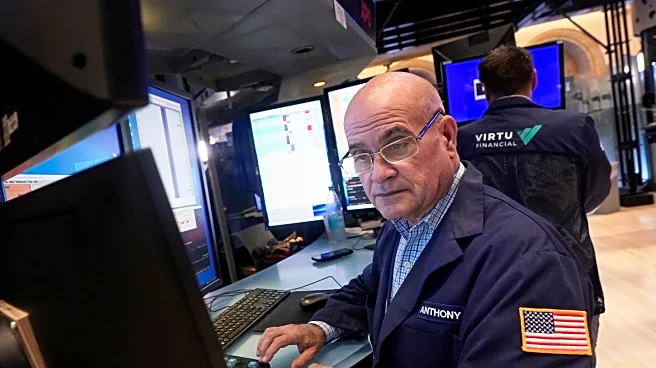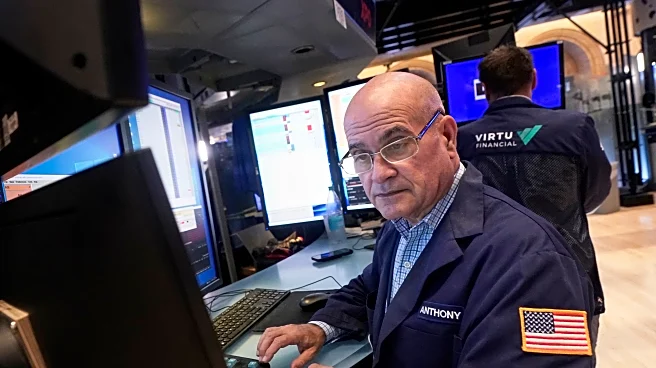What's Happening?
The S&P 500 concluded the week with a minimal pullback, closing only 0.30% lower despite several factors that could have prompted a more significant decline. These factors included technical overbought conditions, seasonal patterns, and reactions to AI and chip news, alongside a rise in Treasury yields. The index remains less than a percent from its record high on September 22 and has not experienced a 3% dip since May. The market's resilience is attributed to rotational action and a quick dip-buying reflex, supported by stable data on personal income, spending, and PCE inflation. However, the market is not without its challenges, as mega-tech leaders have shown less reliability, and regional banks have retreated.
Why It's Important?
The S&P 500's performance is significant as it reflects investor sentiment and market stability amid potential economic headwinds. The resilience of the index suggests confidence in the current economic environment, with the Federal Reserve having room to adjust interest rates without stifling growth. This stability is crucial for maintaining investor confidence and supporting economic growth. The market's ability to withstand pressures from high valuations and seasonal concerns indicates a robust underlying economic framework, which is essential for long-term investment strategies.
What's Next?
Looking ahead, the market faces potential challenges such as quarter-end rebalancing and high valuations. The ongoing skepticism around AI and other tech sectors may continue to influence market dynamics. Investors will be closely watching for any shifts in Federal Reserve policy or economic indicators that could impact market sentiment. The balance between maintaining growth and controlling inflation will be a key focus for policymakers and investors alike.
Beyond the Headlines
The current market conditions highlight the importance of strategic diversification and risk management for investors. The resilience of the S&P 500 amidst various pressures underscores the need for a balanced approach to investment, considering both growth opportunities and potential risks. The evolving economic landscape, influenced by technological advancements and policy decisions, will continue to shape market trends and investor strategies.











